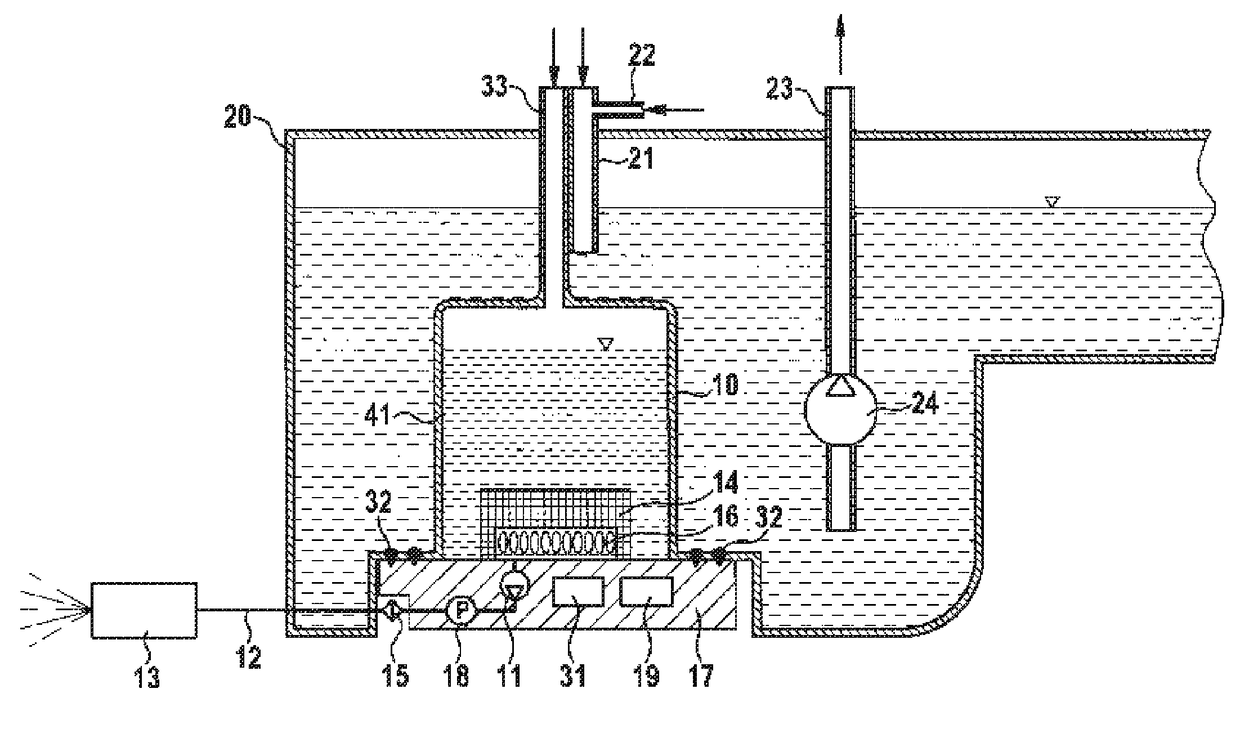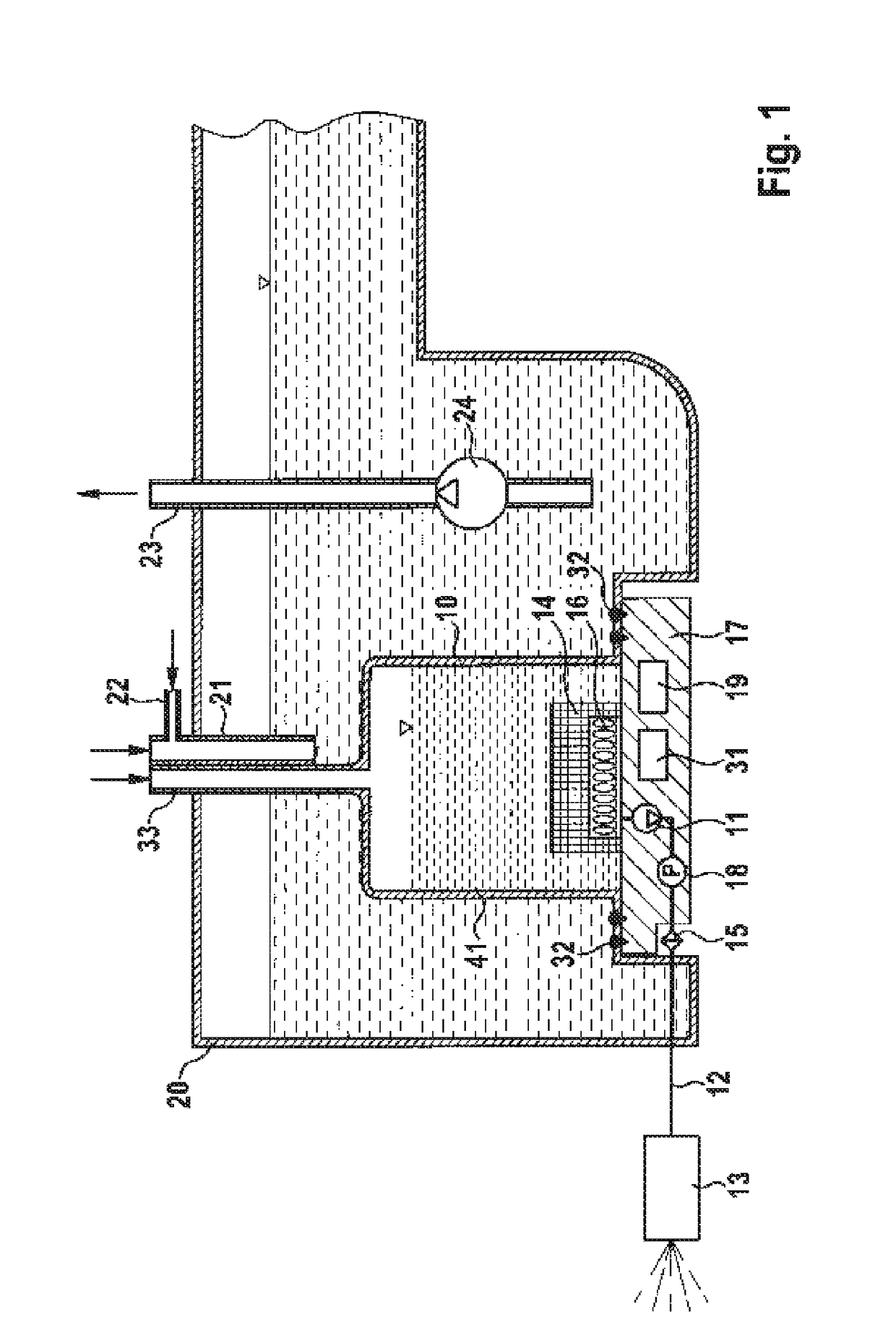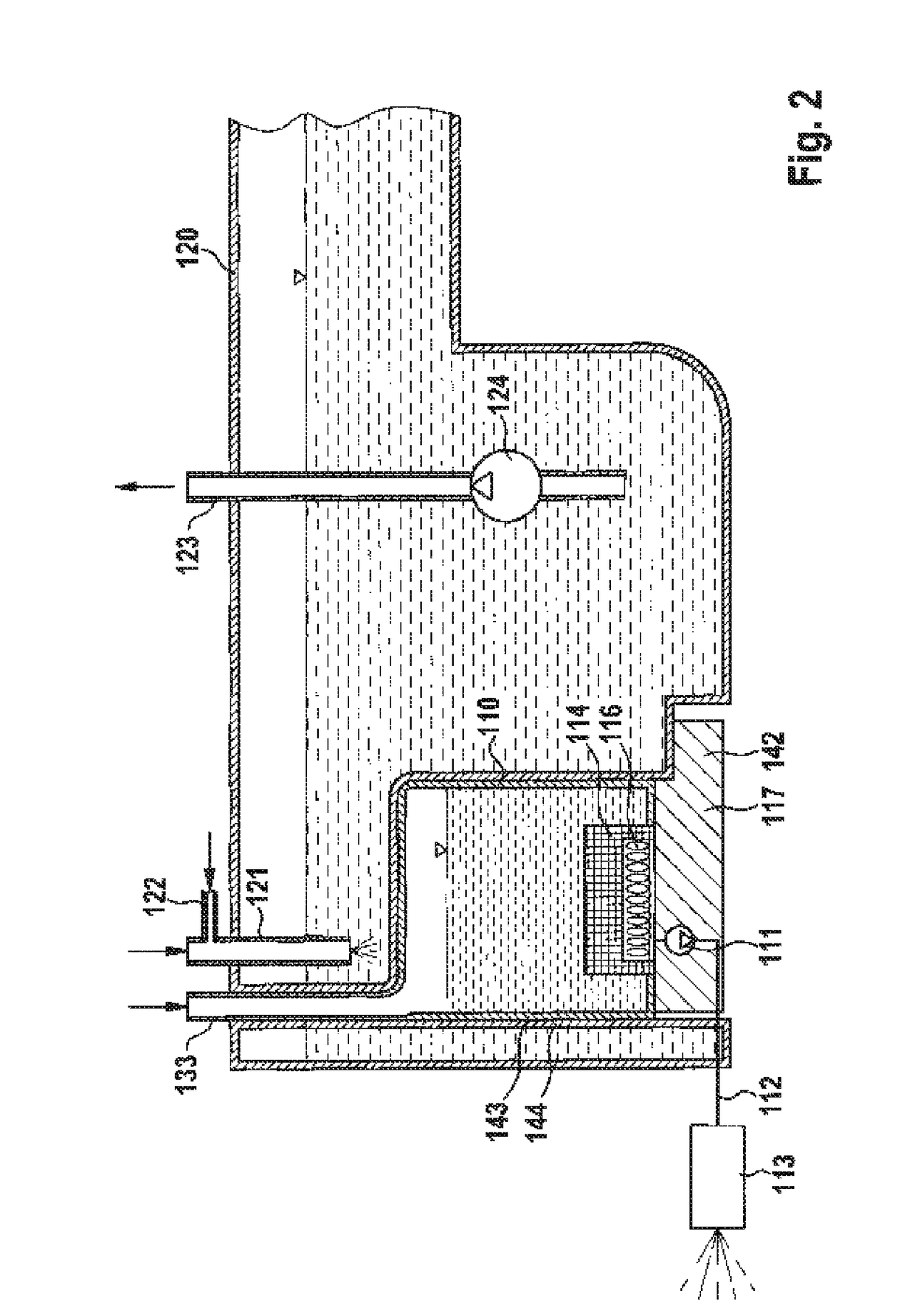Container assembly for a motor vehicle
a technology for motor vehicles and containers, applied in the direction of machines/engines, mechanical equipment, transportation and packaging, etc., can solve the problems of ice pressure damage affecting, and achieve the effects of reducing load, reducing damage, and accelerating thawing process
- Summary
- Abstract
- Description
- Claims
- Application Information
AI Technical Summary
Benefits of technology
Problems solved by technology
Method used
Image
Examples
Embodiment Construction
[0015]FIG. 1 illustrates in a schematic way a container assembly according to the invention for a motor vehicle, in which a container 10 for a liquid auxiliary agent, in particular for the reducing agent solution of an SCR catalyst, is integrated into a container 20 for a fuel of the motor vehicle. The auxiliary agent container 10 is arranged in the interior of the fuel container 20. In the sense according to the above description, the container 10 for the auxiliary agent is the second container and the container 20 for the fuel is the first container. The fuel is removed from the container 20 via the removal line 23, which is operated via a pump 24. Thus, the fuel is removed at the top. According to the invention, a removal device for the auxiliary agent is provided at the bottom of the auxiliary agent container 10, wherein the essential element of the removal device is a pump (delivery pump) 11. The delivery pump 11 delivers the auxiliary agent from the container 10 to a metering ...
PUM
 Login to View More
Login to View More Abstract
Description
Claims
Application Information
 Login to View More
Login to View More - R&D
- Intellectual Property
- Life Sciences
- Materials
- Tech Scout
- Unparalleled Data Quality
- Higher Quality Content
- 60% Fewer Hallucinations
Browse by: Latest US Patents, China's latest patents, Technical Efficacy Thesaurus, Application Domain, Technology Topic, Popular Technical Reports.
© 2025 PatSnap. All rights reserved.Legal|Privacy policy|Modern Slavery Act Transparency Statement|Sitemap|About US| Contact US: help@patsnap.com



